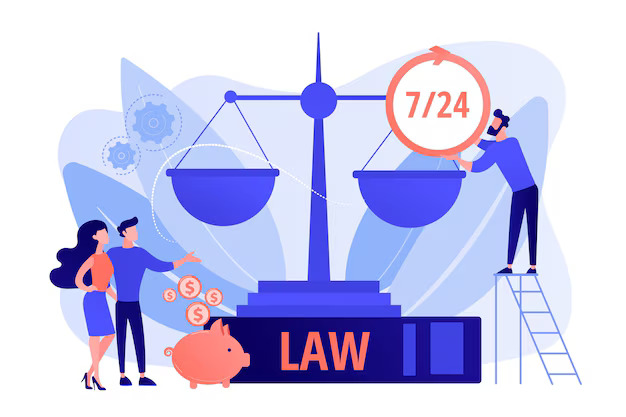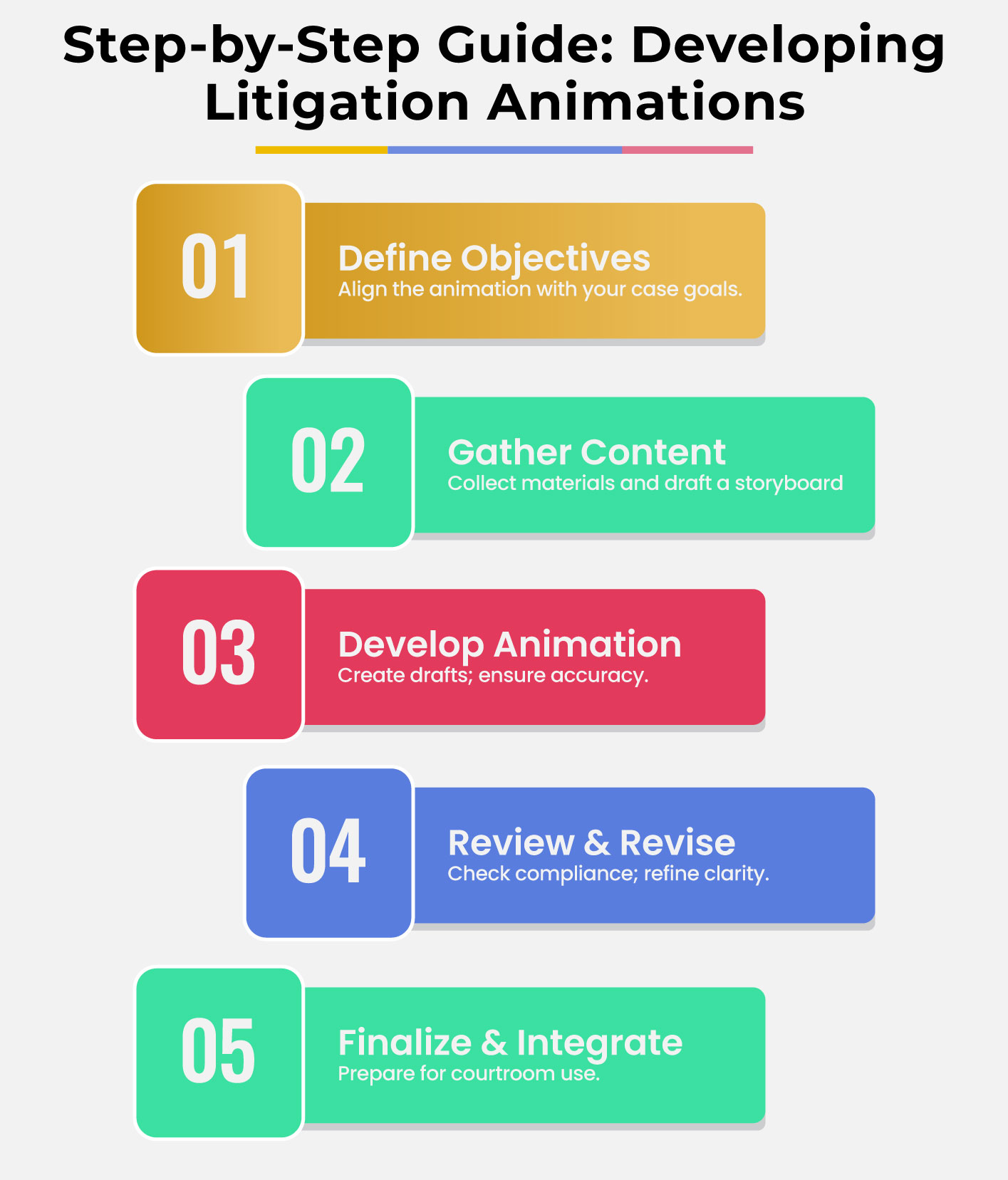Litigation Animation in Modern Legal Practices

Law firms and lawyers are continuously looking for new and creative ways to improve their case presentations and influence the judgments of the courts in the competitive legal market. Litigation animation stands out among these techniques as a powerful visual aid that may simplify complicated legal information into visually captivating and easily understood stories. Here are several ways that incorporating litigation animation into your firm might help it grow.
Understanding Litigation Animation
More than just making graphics, litigation animation involves telling a factual, compelling story that may be utilized in court, mediation, or arbitration. These animations assist juries and judges in understanding minute facts that are crucial to a case by transforming abstract ideas and factual sequences into vibrant, easily readable information.
Key Features of Litigation Animation:
- Precision and Accuracy: Detailed and exact representations to support factual evidence.
- Engagement: Visually appealing elements keep the courtroom focused and engaged.
- Clarification: Simplifies complex concepts like timelines, processes, or mechanisms.

The Strategic Edge of Litigation Animation for Law Firms
Using litigation animation from reputable legal animation companies in your firm gives you a strategic advantage over simply staying current with technology. What it contributes is as follows:
- Enhanced Comprehension: Jurors are only experts in some fields. Animations can demystify complex legal issues, making them accessible and understandable.
- Emotional Impact: A skillfully done animation can trigger the emotional impact of a circumstance and change viewers’ opinions of the case.
- Memorable Presentations: Visual aids are more likely to be remembered than verbal descriptions alone, making your arguments more memorable.
Table: Comparison of Traditional vs. Animated Trial Exhibits
| Feature | Traditional Exhibits | Animated Exhibits |
| Engagement Level | Moderate | High |
| Recall Rate | Low | High |
| Detail Clarity | Variable | High |
| Persuasiveness | Good | Excellent |
How to Implement Litigation Animation in Your Practice
To incorporate litigation animation effectively, consider the following steps:
- Identify the Need: Analyze which parts of your case could benefit most from visual explanations.
- Choose the Right Provider: Select litigation animation services that specialize in legal content to ensure accuracy and compliance with legal standards.
- Integrate into Strategy: Plan how and when to use these animations during your presentations for maximum impact.
Tips for Effective Use of Litigation Animation:
- Keep animations concise and to the point.
- Ensure all animations are admissible and comply with courtroom standards.
- Prepare to explain and support the animation with factual evidence.
Training and Education for Lawyers
It takes more than just choosing to utilize litigation animation in your practice; you also need to be well-versed in its strategic uses as well as its technological components. To fully reap the rewards of this effective weapon, funds must be allocated for the education and training of lawyers and legal teams.
Essential Training Components:
- Technical Training: Lawyers don’t have to become animation experts, but a basic understanding of how litigation animations are created and what makes them effective is essential. This includes knowing the types of animations possible, such as 3D or 2D animations, and the software generally used in their creation. Training should also cover how to work closely with animation professionals to ensure that the end product accurately reflects the factual narrative of the case.
- Strategic Use of Animations: Understanding when and how to use animations strategically in trials is as important as the animations themselves. Education sessions should cover various case studies where animations have been decisive, teaching lawyers to identify potential use cases in their practices. These sessions can go into the psychology of how visuals impact jury perception and decision-making.
- Legal Considerations: Lawyers need to be aware of the legal requirements that control whether animations may be admitted into evidence. As a result, training should involve a study of relevant case law and evidence guidelines to ensure that any animations utilized pass the legal examination and are more likely to be approved by a court.
- Ethical Considerations: Alongside legal standards, ethical considerations must also be emphasized. Lawyers must be trained on the moral implications of using visual aids that could potentially mislead a jury, even unintentionally. This includes ensuring that animations do not exaggerate or diminish key elements of the case.
Implementing Training Programs:
Law firms can implement these training programs through a variety of formats:
- In-House Seminars and Workshops: Regularly scheduled sessions led by experts in legal technology and forensic animation can be a practical approach.
- Online Courses and Webinars: Online platforms can provide adaptable, self-paced learning choices for continuing education that can be updated in response to changes in legal precedents and new technology.
- Collaborations with Animation Firms: Partnering with firms that specialize in legal animation services can provide hands-on learning experiences and insights directly from the field.
Innovations in Law Animation
As technology advances, so does the field of law animation. The future might bring more immersive experiences, such as virtual reality environments where a jury can “walk through” a crime scene. Staying updated with these innovations can set your firm apart as a forward-thinking, client-oriented practice.
Marketing Your Litigation Services
Promoting your litigation services effectively is crucial in the law industry. Consider crafting a “15 Second Video Ad for Law Firm” that highlights your expertise in using litigation animations. This can be an excellent tool for social media platforms, where engaging content drives visibility and client engagement.
Conclusion
Using litigation animation is a prime example of how technology and legal knowledge can work together, and it’s becoming a must for legal firms looking to improve their performance in the courtroom. Through the use of visual storytelling, lawyers are able to transform difficult legal ideas into convincing proof that is both understandable and long-lasting. Using this technology improves courtroom presentations and gets companies ready for future issues as legal environments change.
FAQs
Q 1: What is litigation animation?
Litigation animation refers to the use of animated visuals to depict complex legal scenarios, helping explain the details of cases in court clearly and engagingly.
Q 2: How can litigation animation benefit my law firm?
It can enhance understanding of complex issues, increase engagement during trials, and improve the memorability of your case presentation, potentially swaying court outcomes favorably.
Q 3: Are there specific cases where litigation animation is more effective?
Yes, cases involving complex processes, detailed reconstructions, or extensive data are ideal candidates for litigation animation.
Q 4: What should I look for in litigation animation services?
Seek providers with specific experience in legal animations who understand the nuances of admissibility and can offer accurate, high-quality visuals.
Q 5: How much does litigation animation cost?
Costs can vary widely based on the complexity of the animation and the provider's expertise. It's best to consult with several providers to get quotes and compare services.
Q 6: Can 3D walkthrough services be used in litigation animation?
Yes, 3D walkthrough services can be an effective tool in litigation animation, providing immersive and detailed visualizations of crime scenes or complex processes, enhancing the jury's understanding and engagement.










